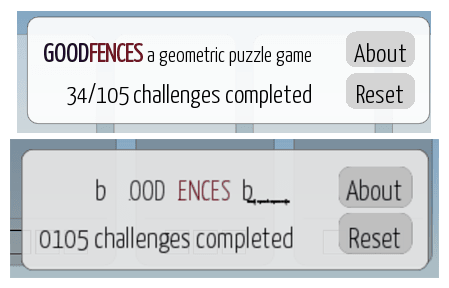Once again I’m finding myself feeling quite lost in trying to understand the state of OpenFL and Lime development, and could use some help or pointers.
For the record, I’m developing a 2D puzzle game. It’s almost entirely vector graphics, so I’m relying heavily on the old Flash API for drawing paths and text.
With the latest versions of OpenFL and Lime, my game is basically unplayable:
- My layout depends on knowing the screen DPI, which is currently unavailable
- Filters don’t seem to be working
- Text rendering quality is poor in places (possibly because of filters)
- Text layout with embedded HTML doesn’t work
- My event handling no longer works (using code that worked fine in previous releases)
- Transparency looks very different
- My app crashes on startup in iOS (in lime::font::getAscender?)
I can sort of muddle through with -Dlegacy, but there still seem to be problems with DPI, and this mode doesn’t work in neko mode on my retina display (the graphics are squeezed into the bottom-left quadrant of the screen, but events still come from the whole screen). To summarize, I’m currently feeling a bit… forsaken by Haxe/Lime/OpenFL, projects that I’d really like to support.
I’m not a full-time software developer, so I’m hoping for a relatively painless way to get unstuck. Should I persist with the newest OpenFL, expecting things to stabilize very soon? Should I wait for a fix to legacy mode? Or should I downgrade to earlier versions of OpenFL and Lime? Generally speaking, how can I keep track of what features should be working and what’s currently being repaired?
Thanks for any help or advice.


